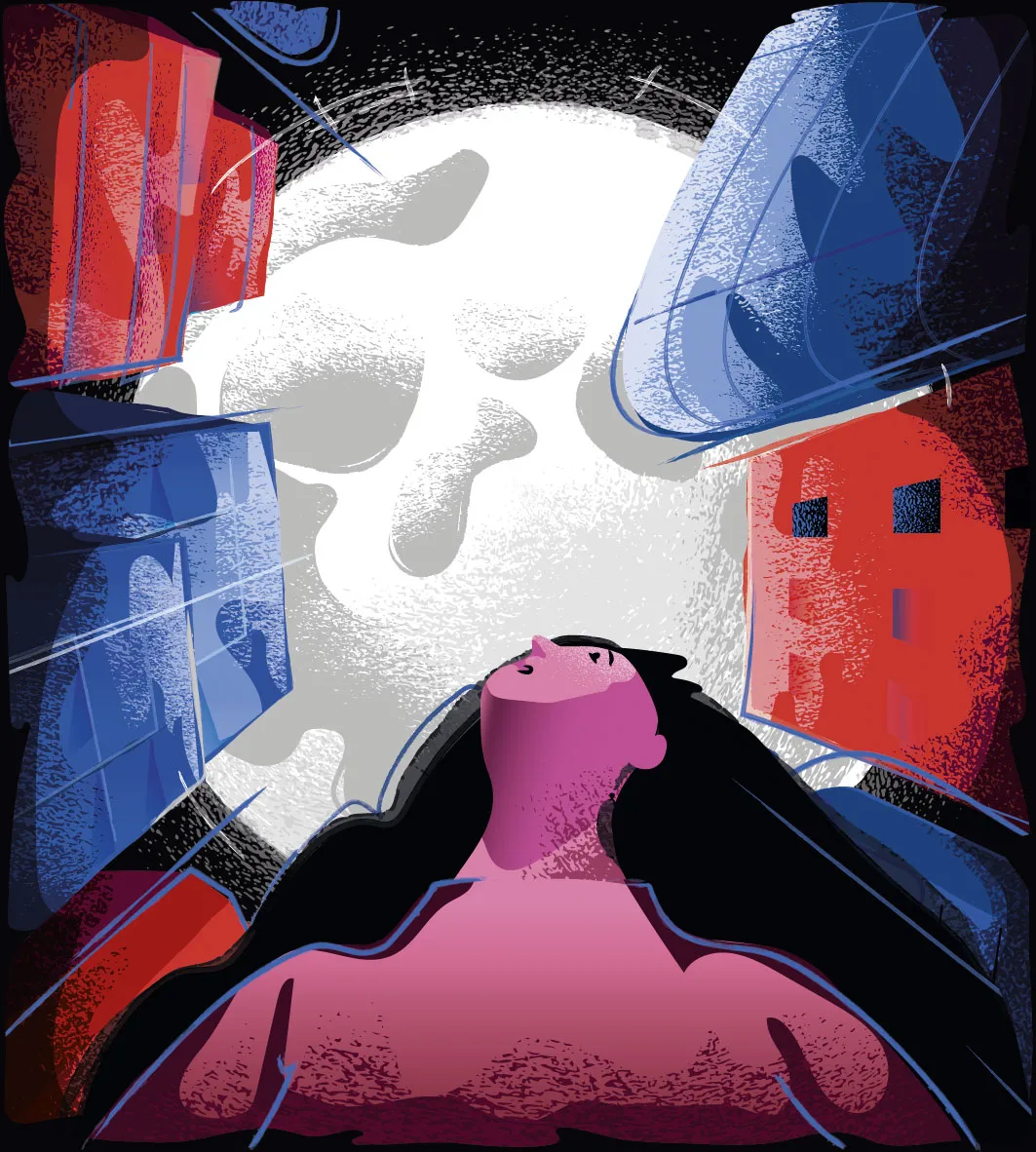When the Moon hits your eye like a big pizza pie that’s a… Moonfall, the new disaster movie from Roland Emmerich in which the Moon – for reasons that are not yet clear – falls out of the sky and crashes to Earth.
Such a premise raises inevitable questions. How has the Moon fallen out of its orbit? What does that mean for the Earth? How can it be stopped? And most importantly of all, should we be staring up at our own real-life Moon, shaking our fists and shouting at it to stay where it belongs?
Dr Tony Cook, a physics lecturer at Aberystwyth University, doesn’t think so. He is confident that, if left alone, the Moon is not in any danger of suddenly dropping from space. “There’s an equilibrium between the Earth and the Moon,” he says. “It’s a balancing point called the barycentre and the two bodies rotate around that.”
This point, he explains, is positioned closer to the Earth than the Moon, inside the Earth’s surface. “It’s a bit like a see-saw,” he says. “If you’ve got a really heavy person on one end and a lightweight on the other, the balancing point has to be more towards the bigger person.”
But what if the Moon wasn’t left alone? The trailers for Moonfall, after all, suggest malicious intent from shadowy extraterrestrials. What could possibly knock the Moon off its course? “If you’re an alien, I think you would need to put some propulsion engines on the lunar surface,” Cook says.
“I think you could probably deflect the orbit of the Moon over a long period of time, but you would need an enormous amount of energy to do that, and probably have to do it gently otherwise the Moon might fall to pieces. A similar method has been proposed to change the direction of asteroids.”

If evil aliens did manage to push the Moon towards Earth over the course of many, many years, the effects on our planet would be devastating. “If the Moon was even half the distance away, the tides would be eight times stronger than they are at present,” says Cook.
“So if the Moon got really close to the Earth, you’d have massive tides to contend with. There would be a lot of coastal flooding. There would be a lot more gravitational influence on the interior of the Earth, so you might also churn up and heat some mantle, leading to a lot more volcanism and earthquakes.”
Okay, and what about Moonfall’s portrayal of the Earth’s oceans being sucked into the sky? “I don’t think that would happen,” says Cook, laughing like a man who has just been asked a very stupid question. “They’d certainly be swirling around quite a lot more. You might get some tsunamis. But water going up into the air? I imagine not.”
Moonfall, of course, does have something of a real-life parallel. At the time of writing, NASA has warned that a ‘wobble’ in the Moon’s orbit during the mid-2030s could contribute to severe flooding. This wobble, explains Cook, is part of a natural 18.6-year cycle in the Moon’s orbit – half of which, thanks to fluctuations in the Moon’s gravitational pull, is spent suppressing tides, the other half amplifying them.
“It is something that has been with us over recorded history,” he says, “but in the future, combined with rising sea levels, it might just be the straw that breaks the camel’s back in some low-lying parts of the world.”
Proof, yet again, that the dangers of reality are often far more worrying and far less exciting than they are on the big screen. Moonwobble just doesn’t have the same ring to it.
Verdict: Astronomers rejoice, the Moon will be staying put for the foreseeable future. Huzzah!
- This article first appeared inissue 373ofBBC Science Focus Magazine–find out how to subscribe here
About our expert, Dr Tony Cook
Tony is a research lecturer in the Department of Physics at Aberystwyth University. His research includes transient lunar phenomena and close-range remote sensing using robotic telescopes.
Read more fromPopcorn Science: